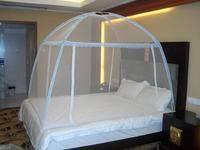After reading the article http://goo.gl/CHVd9, I wonder if there is any material that would completely block the waves of wifi and cellular telephony?
I have read about the wallpaper: https://www.elektroda.pl/rtvforum/topic2290980.html
But she only blocks the WIFI
I tested food grade aluminum foil - I wrapped it tightly on my wifi router - it doesn't work, I didn't even notice a decrease in signal strength.
Someone wrote that even in a microwave oven there is no complete blocking of waves, because a mobile phone locked in a microwave oven still shows the range.
What material would actually block wifi and cellular waves? I am talking about a material that could be used to cover the walls in the bedroom and at least not be exposed to them during sleep.
I have read about the wallpaper: https://www.elektroda.pl/rtvforum/topic2290980.html
But she only blocks the WIFI
I tested food grade aluminum foil - I wrapped it tightly on my wifi router - it doesn't work, I didn't even notice a decrease in signal strength.
Someone wrote that even in a microwave oven there is no complete blocking of waves, because a mobile phone locked in a microwave oven still shows the range.
What material would actually block wifi and cellular waves? I am talking about a material that could be used to cover the walls in the bedroom and at least not be exposed to them during sleep.




